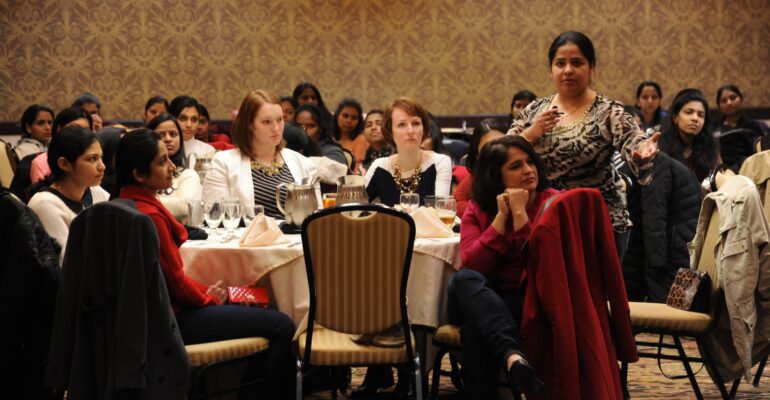Want to refute something? Don’t deny it. Instead, manufacture doubt
Today being the first Saturday of the month, it is time for my content recommendations – a book, a podcast, articles and videos.
Let’s get started
1. Book
a. ‘How to Make the World Add Up: Ten Rules for Thinking Differently About Numbers’ by Tim Harford
In 1953, senior executives from the tobacco industry met at the Plaza Hotel in New York. They were meeting to discuss a recent study by a couple of British scientists. In the study, the scientists – after a painstaking randomised control trial – had come to a shocking conclusion which for the first time linked smoking to cancer: if you smoke, the study found, you are sixteen times more likely to get lung cancer.
That should have resulted in worldwide censure and an immediate ban. Except it didn’t. You see, Big Tobacco had a trick up its sleeve.
You would assume that they would have published research that refuted these findings – perhaps running their own studies which proved that patients who died of lung cancer did not disproportionately smoke.
Instead, they did something else. They decided to obfuscate.
As the author puts it:
“They questioned the existing research; they called for more research; they funded research into other things they might persuade the media to get excited about, such as sick building syndrome or mad cow disease.
They manufactured doubt.
Their challenge was not to convince smokers that cigarettes were safe, but to create doubt about the statistical evidence that showed they were dangerous.“
Doubt. The weapon that can be even more powerful than clear contrary evidence (because that can be doubted). How can you doubt doubt?
It’s a playbook that is merrily used by politicians of all stripes and colours since then. Here’s an infamous quote by Steve Bannon, Trump’s ex-chief ideologist:
“The Democrats don’t matter. The real opposition is the media. And the way to deal with them is to flood the zone with shit.“
Suddenly everything is ‘fake news’, and we are in a post-truth world.
In this scenario, Tim Harford (the author of several bestsellers, including ‘The Undercover Economist’) rises to the defence of the statistics profession. He cites several inspiring stories of progress over the centuries – which have been driven by meticulously compiled data:
- The study that linked smoking to cancer
- The painstaking, data-driven efforts of a nurse, Florence Nightingale, to convince top British army brass to pay attention to sanitary conditions in their camps
- The courageous Greek statistician who told the truth about his country’s woeful numbers – and became public enemy number one
While he defends the statistics profession, Harford acknowledges that data can be misused to make inaccurate or even malicious claims. As the old adage goes, there are three types of lies: Lies, damned lies and statistics.
But, he adds, “Yes, it’s easy to lie with statistics – but it’s even easier to lie without them.”
And so, in this book, Harford does not go about enumerating the benefits of accurate data. Instead, he gives us a set of robust and universal principles to stress-test the data we are looking at.
He condenses his wisdom into 10 overarching ‘rules’ that are essential reading for anyone in the profession of dealing with data.
Here are some of the principles he espouses:
– Connect with your feelings: You read that right. Numbers hide stories. Stories make us feel. Often we let the feeling dictate whether we should believe the number or not. Harford has simple advice. You cannot suppress your feelings – just be aware of them. Here’s how he puts it:
“The first simple step is to notice those emotions. When you see a statistical claim, pay attention to your own reaction. If you feel outrage, triumph, denial, pause for a moment. Then reflect. You don’t need to be an emotionless robot, but you could and should think as well as feel… The good news is that simply pausing for a moment to reflect was all it took to filter out a lot of the misinformation.“
– Get the worm’s eye and the bird’s eye view: Mohammad Yunus of Grameen Bank came up with the term ‘worm’s eye view’ as a counterpart to the bird’s eye view. You need both. Don’t rely only on the stats – look for anecdotal evidence too. At the same time, don’t extrapolate based on a single anecdote or news item!
When reading this part, I remembered an incident that I read in another book about Amazon – ‘The Everything Store’ by Brad Stone. It describes a review meeting in Amazon with Jeff Bezos:
“Bezos began the meeting by asking Price what the customer wait times were. Price then violated a cardinal rule at Amazon: he assured Bezos that they were well under a minute but without offering much in the way of proof. “Really?” Bezos said. “Let’s see.” On the speakerphone in the middle of the conference table, he called Amazon’s 800 number. Incongruously cheerful hold music filled the room. Bezos took his watch off and made a deliberate show of tracking the time. A brutal minute passed, then two. Other execs fidgeted uncomfortably while Price furtively picked up his cell phone and quietly tried to summon his subordinates. Bezos’s face grew red; the vein in his forehead, a hurricane warning system, popped out and introduced itself to the room. Around four and a half minutes passed, but according to multiple people at the meeting who related the story, the wait seemed interminable. Eventually a cheerful voice blurted out, “Hello, Amazon.com!” Bezos said, “I’m just calling to check,” and slammed down the phone. Then he tore into Price, accusing him of incompetence and lying. Price was gone about ten months later.”
The worm’s eye view needs to be combined with the bird’s eye view.
- Get historical context: ‘London’s Murder Rate Is Higher than New York’s for the First Time Ever!’ screamed the newspaper in April 2018.
Should Londoners have been alarmed? We can’t say, states Harford. The news tends to take the most dramatic interpretation of any piece of data. It’s our job to dig deeper and get context about the numbers before drawing any conclusion.
In this instance, there were 14 murders in New York, and 15 in London in that particular month. But that by itself doesn’t tell us anything. From a data-storytelling point of view, it lacks adequate ‘norms’ – numbers against which you can make an appropriate comparison.
Here’s how Harford puts the numbers in context:
“London had 184 murders in 1990, while New York suffered 2262 – more than ten times as many. It’s with that image in mind of New York as a murderous place that Londoners are alarmed at the idea that they might have become as rotten as the Big Apple. But London’s murder rate has fallen, not risen, since 1990. In 2017, there were 130 murders in London, including ten people killed in terrorist attacks. London was safe in 1990 and it’s a little bit safer today. As for New York, murders fell to 292 in 2017. That means New York is still more dangerous than London, but much, much safer than in 1990.“
Step back and get perspective to understand the true significance of the numbers
The book discusses seven more such rules, and a final ‘Golden’ rule (“Be Curious”), which equip us with the right tools to make sense of the avalanche of data we are all facing.
Harford is a fabulous storyteller – and weaves several real-life stories to make the concepts and research-studies engaging. In fact, I discovered about this book on another storytelling medium – his podcast, Cautionary Tales – which is one of the most engaging non-fiction shows I have heard.
This book is a *must-read* for folks who work with data.
2. Podcast
a. Naval Ravikant Interview with Matt Ridley
Naval Ravikant, the founder of AngelList and early-stage investor extraordinaire, is a Silicon Valley institution, probably best known for his tweetstorm – ‘How to get rich, without getting lucky‘.
In this podcast interview, Naval chats with science author Matt Ridley, about his latest book, ‘How Innovation Works’.
One point that I found insightful was the busting of the lone-investor myth (e.g. Bell invented the telephone, the Wright brothers invented the airplane etc.). Instead, innovation is shown to be an incremental, serendipitous and painstaking process.
Often, however, the media, government and other institutions (e.g. the Nobel prize committee) look to lionise individual heroes – which massively underestimates the efforts of several others who laid the groundwork before the ‘inventor’.
Here’s an interesting parable Matt shares:
‘Edison said this is a process of 1% inspiration and 99% perspiration. What I’m trying to do in this book is rescue the perspirators from obscurity and slightly relegate the inspirators, who will always think they deserve the most credit, and who sometimes complain about not getting enough reward because it’s their original idea. I like to tell the story that Charles Towns, the inventor of the laser, used to tell, of a rabbit and a beaver looking at the Hoover Dam, and the beaver says to the rabbit, “No, I didn’t build it, but it’s based on an idea of mine.” That is how inventors quite often think about innovations: “Come on, I had the idea!” But it’s a huge amount of work and talent to turn an idea into something practical.’
(Hat-tip: Rahul Tawde)
3. Articles
a. A brilliant account of the US presidential campaign
In mid-February 2020, it seemed like the US (and the world!) was going to get four more years of Trump. The economy was strong, the President’s poll numbers looked good, the campaign was flush with funds.
But the campaign manager had a concern about a mysterious virus that had originated in Wuhan, China. “Sir… this (Coronavirus) is coming. It’s the only thing that could take down your presidency”
As per this article, Trump was dismissive, saying: “This f***ing virus, what does it have to do with me getting reelected?”
Turns out, a lot.
This fabulous long-form article provides a gripping edge-of-the-seat narration of the US Presidential campaign. Filled with incidents and quotes from insiders, it’s a great example of journalistic storytelling.
b. How we pay for software by Adam Wiggins
Adam Wiggins is a software designer who thinks deeply and writes with breathtaking clarity.
In this series of articles about the ‘computer-embroidered reality’ we all live in, he delves into the basics of all critical aspects of the software that rules us, and cautions us about falling prey to the designs of Big Tech. He also makes an appeal for how things need to change to make it a genuinely user-first world.
(Hat tip – Guru Sundaram).
c. CricInfo – Top 20 Balls of the century
Cricket stuff. Superb analysis. CricInfo writing. Nuff said.
4. Videos
a. Interview – President Obama with Jimmy Kimmel
Former President Barack Obama recently released his memoirs (part 1) to record sales. In this snappy, fun interview with late-night show host, Jimmy Kimmel, Obama opens up to questions about the book, his presidency and the end of the Trump era.
When Jimmy asks him, “have (your daughters) Malia and Sasha read the book”, Obama responds “You’re never a Prophet in your own land. Their attitude is ‘we’ve got better things to do than read your boring rants and raves'”.
b. Key and Peele – Gideon’s Kitchen
I can watch this hilarious take-down of cooking reality shows a thousand times and not get bored. Key nails the pompous Brit reviewer while Peele plays the bemused participant in this sassy sketch.
That’s it folks: my recommended reads, listens and views for the month.
Stay safe and healthy!
Photo by Wonderlane on Unsplash







